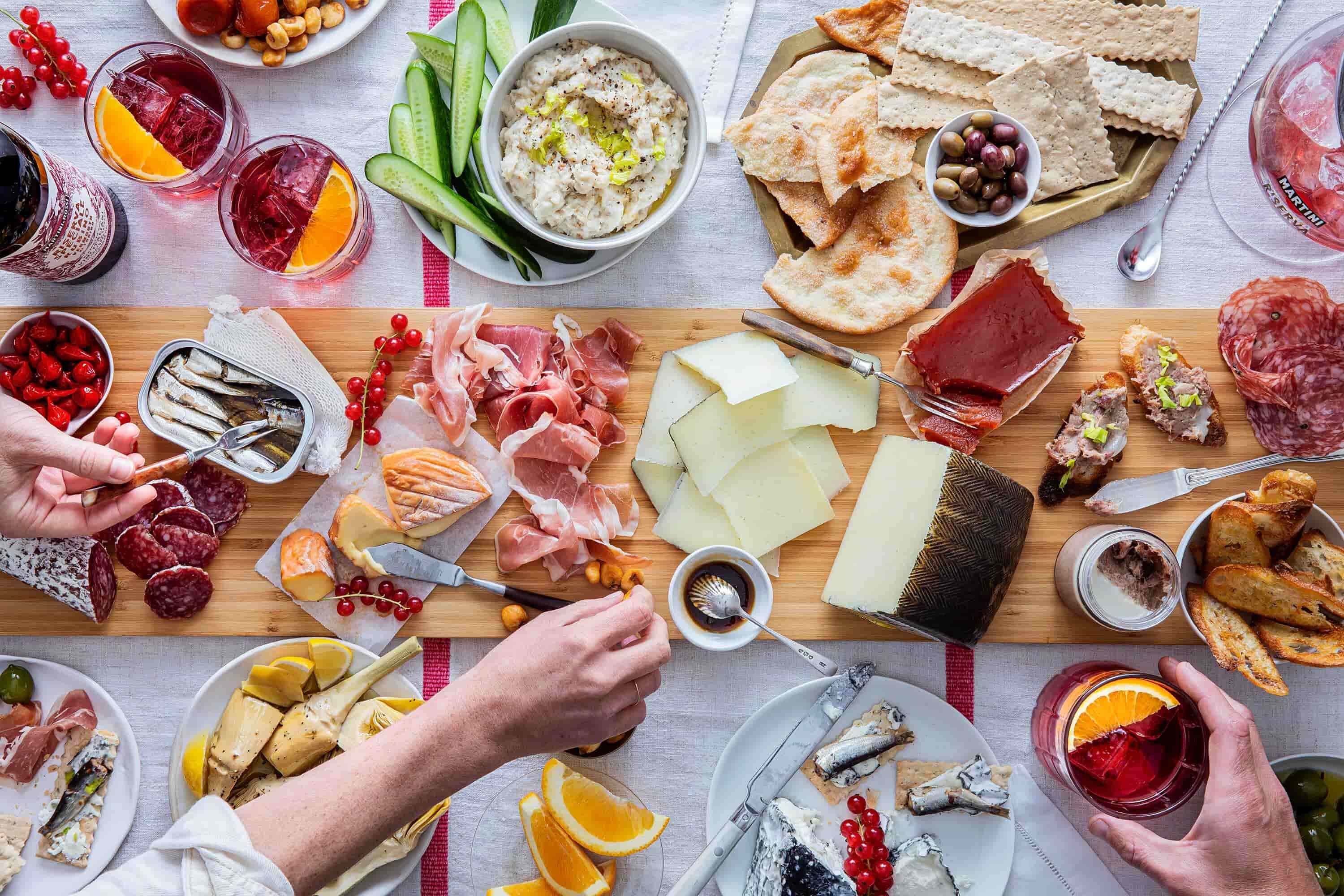Tips for Building a Better Maximalist Spread
Here, tips from entertaining, lifestyle and cheese experts on building a better, most impressive, maximalist aperitivo spread.
The Essentials: Acid and sweetness are important to counter the richer elements of cheese and meat. Gwen Gunheim and Sallie Miller of Miracle Plum, a general store, wine shop and café in Santa Rosa, California, say, “We like fresh fruit, jam or honey drizzled over a soft cheese. Pickles cut the richness of everything else, act as a palate cleanser and keep folks engaged in the spread.” For Clark, fresh-cut cheese is always the best kind of cheese: “Cheese is a living thing. Even the best, most award-winning cheese won’t taste as good when it’s been tightly wrapped in plastic wrap and ignored for weeks,” she says. It may be more expensive, but in the long run, you’re paying for handmade quality.
Diversify Flavor: Gunheim and Miller think about their spreads as a matrix. “Three cheeses: soft, hard, stinky; something sweet; something salty; a pop of color,” they recommend. “It makes it easy, so you are not reinventing the wheel every time.” Quinn believes in including fresh and dried produce, a variety of crackers and a spreadable accoutrement like honeycomb, quince paste or fancy mustard.
Maximize Space: Quinn recommends using every inch of the board, filling in gaps with “layers of tasty items to make a delicious, overflowing and eye-catching platter.” (Since soft items like ripe fruit and oozy cheese can migrate across surfaces, Clark likes to give them their own ramekins or jars.)
The Element of Surprise: The perfect aperitivo board is elegant, but also interesting. Quinn challenges people to think about color. “Cheese and crackers are primarily whites, beiges, pink and yellows, so be sure add in color with your other items, like produce,” she says. Depending on the season, she’ll mix it up with rich purples (grapes, blueberries), oranges (mimolette, gouda), and reds (strawberries, apples). Gunheim and Miller insist that texture brings a whole other aspect to a spread—pairing creamy with crunchy, or snappy with smooth. Clark likes to incorporate thoughtful high-low pairings like potato chips with gooey cheese, or dark chocolate with gouda.
Tie It All Together: With such a variety of foods on one plate, a key to success is including elements that create cohesion. Gunheim and Miller like to include something homemade, whether a special dip, marinated white beans, roasted vegetables or a jam. Quinn always adds fresh herbs or flowers, like fresh rosemary or lavender, for garnish—“a small addition of texture and color that can make a big impact, elevating your spread,” she says. Cohesion comes in the form of winning combinations as well. Lately, Clark has been into “the crunch of Parmigiano Reggiano’s amino acid crystals with crunchy black pepper taralli,” and “smooth, unctuous Brillat-Savarin with a drizzle of Bee Raw’s Colorado clover honey,” which she likens to Cinnamon Toast Crunch, in the best way.
Pair it: Just as important as the spread are the drinks that go along with it. Sparkling wine pairs with almost everything, from cheese to charcuterie to crudité; choose a crisp, zippy bubbly like MARTINI & ROSSI Prosecco or Rosé. Serve on its own, or layer in Riserva Speciale Bitter and soda water to make a classic aperitivo hour spritz. Vermouth, too, is a natural foil for the salt and richness that abounds on these boards. Reach for Ambrato Vermouth di Torino, top with soda water and drop in either a lime slice or a few caper berries for the Vermuttino: a light, dry and slightly spicy cocktail that practically encourages snacking.





